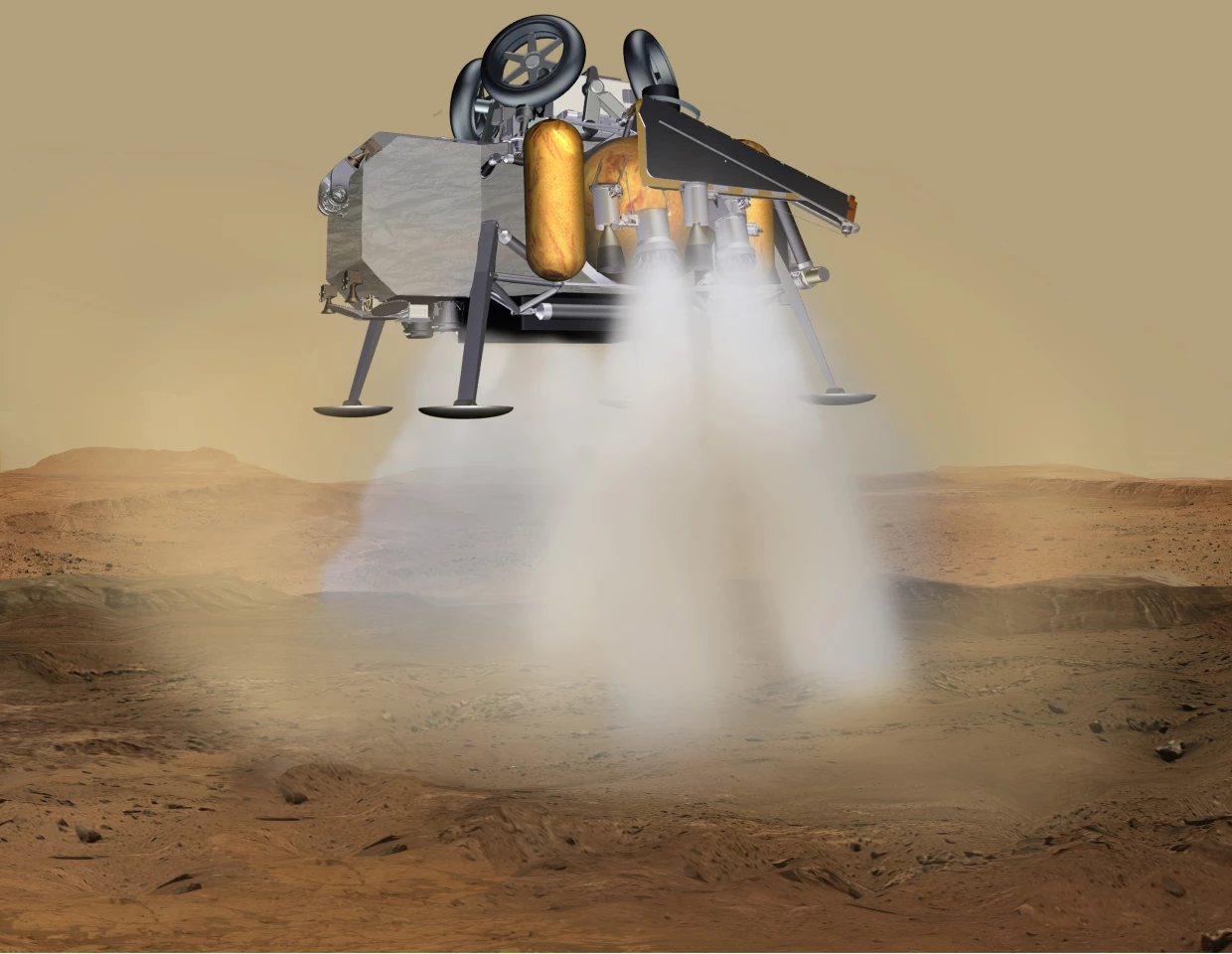Lockheed Martin has been selected by NASA's Jet Propulsion Laboratory (JPL) in Pasadena, California to design and build the aeroshell and heat shield for the space agency's Mars Sample Retrieval Lander, which will help return the first Martian samples to Earth.
Penciled in for a July 2026 launch, the Mars Sample Retrieval Lander is part of a tag-team string of Mars Sample Return missions to bring bits of Mars back to Earth for analysis. The first phase is already underway as NASA's Perseverance rover traverses the Martian surface in search of signs of ancient microbial life. As the nuclear-powered rover collects soil and rock samples, these will be packaged and left behind in caches.
The Mars Sample Retrieval Lander is the next step. The lander will carry another rover, which will deploy and follow in the tracks of Perseverance to collect the cached samples. These will be returned to the lander and loaded into a small rocket that will blast into Martina orbit, where it will rendezvous with another spacecraft, which will return the samples to Earth early in the next decade.

However, for this to happen, the Retrieval Lander needs to get to Mars safely. This means sealing it inside an aeroshell that not only protects it during its months-long voyage to the Red Planet and its fiery entry into the Martian atmosphere, but also keeps it biologically sterile to avoid contaminating Mars with terrestrial microbes.
Because the Retrieval Lander mission is still in the design phase, Lockheed Martin is basing its new aeroshell on experience with building aeroshells for 10 previous Mars missions and the Mars 2020 mission in particular. The aeroshell consists of a conical back shell made of a thermal protection material called SLA-561v, developed by Lockheed Martin, that's made of lightweight silicone and cork.
The base is the heat shield that protects the spacecraft as it strikes the Martian atmosphere at hypersonic speeds. The shield is made of Phenolic Impregnated Carbon Ablator (PICA), which protects against temperatures of up to 5,000 °F (2,760 °C).
"We are excited to partner with JPL again to design, fabricate and test an aeroshell for a Mars mission," says David Buecher, Lockheed Martin program manager for the Mars Sample Retrieval Lander aeroshell. "By protecting this next spacecraft during its descent to Mars, we’re delighted to have a role in the safe delivery of another element of the Mars Sample Return program."
Source: Lockheed Martin







